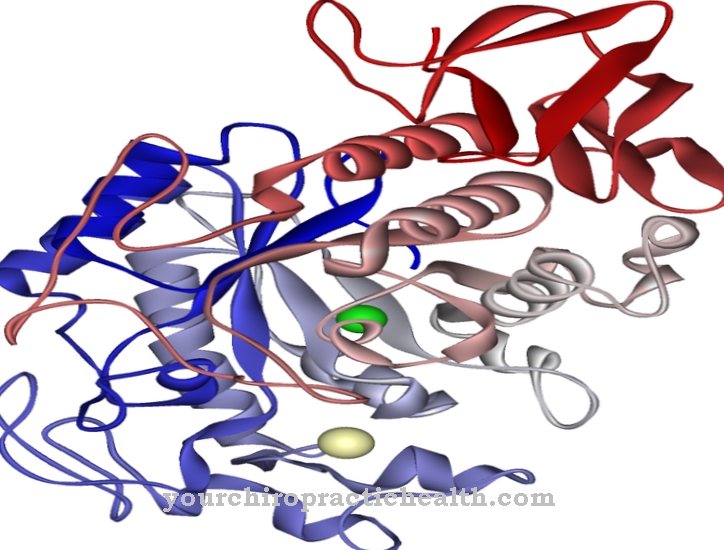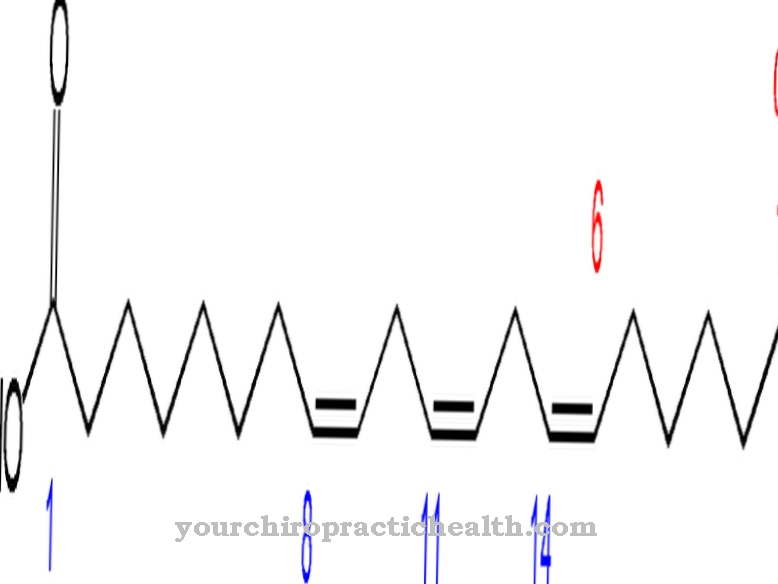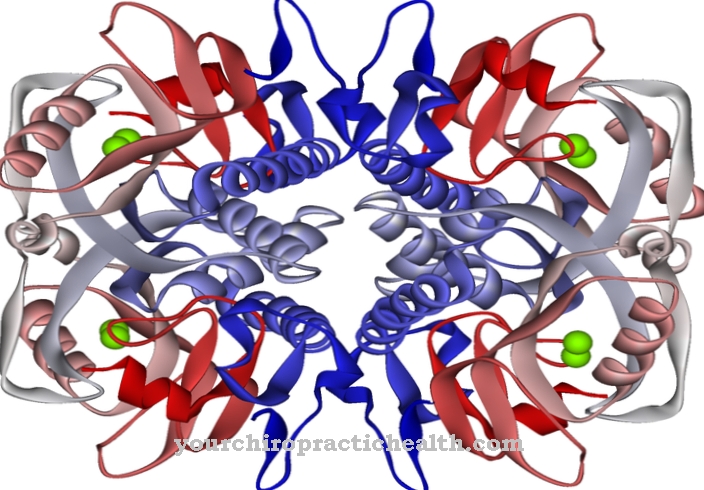What is hemoglobin?
hemoglobin is part of the human blood in the red blood cells (the so-called erythrocytes) and is also known as red blood pigment.
Hemoglobin owes this title to the fact that it is responsible for the red color of the blood. Approx. 280 million molecules of the red blood pigment are found in a single red blood cell. A corresponding hemoglobin molecule is made up of both proteins and color, as is the case in medicine Hamm is called.In its development, the human organism has different forms of hemoglobin - while the hemoglobin of unborn children in the womb is known as embryonic or fetal red blood pigment, so-called adult hemoglobin is found in the blood of healthy adults. Embryonic or fetal hemoglobin is primarily characterized by a comparatively higher capacity for oxygen uptake.
Medical & health functions, tasks & meanings
The hemoglobin contains, among other things, oxygen-transporting proteins that absorb oxygen from the air we breathe and transport it to various destinations within the body.
The hemoglobin binds the corresponding oxygen with the help of iron, which is present in the red blood pigment. In addition, the hemoglobin takes over the transport of carbon dioxide - with the help of the red blood pigment, the carbon dioxide escapes from the tissue into the lungs, from where it can finally be exhaled.
Blood flow and blood pressure are also affected by hemoglobin; For example, hemoglobin is able to widen blood vessels by releasing chemical compounds. In the next step, this blood vessel dilation can manifest itself in a drop in blood pressure or increased blood flow.
In medicine, hemoglobin is used, among other things, for diagnostic purposes - laboratory testing of a patient's hemoglobin can provide information on any disorders / diseases that may be present. A man's hemoglobin level is on average higher than that of a woman.
Illnesses, ailments & disorders
The diseases or disorders that can be identified with the help of the examination of hemoglobin to be determined include, for example, anemia (anemia, which is associated with weakness, tiredness and / or dizziness, for example), impairment of the intact water balance or so-called polyglobulia - unlike anemia (the hemoglobin values are too low in the person affected) polyglobules are characterized by an excess of red blood cells.
However, a low hemoglobin level is not always due to anemia in the context of anemia; Acute blood loss (for example as a result of severe injuries or operations), overhydration affecting the organism, blood formation disorders and diseases of the kidneys and / or intestines often result in a falling level of hemoglobin.
If the hemoglobin level is too high in those affected, this can be the result of very heavy smoking or a long-term stay at pronounced heights, for example. Even in the presence of various lung diseases or a disease known as polycythemia rubra vera, the patient usually has elevated hemoglobin values.
The intact functionality of the hemoglobin can be impaired, among other things, by a lack of iron - since iron is required for the production of the dye contained in the hemoglobin, the dye concentration is lower as a result. In addition, without sufficient iron, the organism is not able to produce hemoglobin. If it is not possible to compensate for a corresponding iron deficiency through diet to a sufficient extent, the use of iron supplements prescribed by doctors may be medically necessary.
Various genetic defects can also impair the production of dye (also known as heme synthesis) in hemoglobin - if the result is an accumulation of precursors of the blood dye, this can lead to excessive sensitivity to light, abdominal pain or neurological complaints in those affected . Malaria pathogens attack hemoglobin molecules and break down its proteins. Corresponding proteins then serve the metabolism of the pathogens.




























